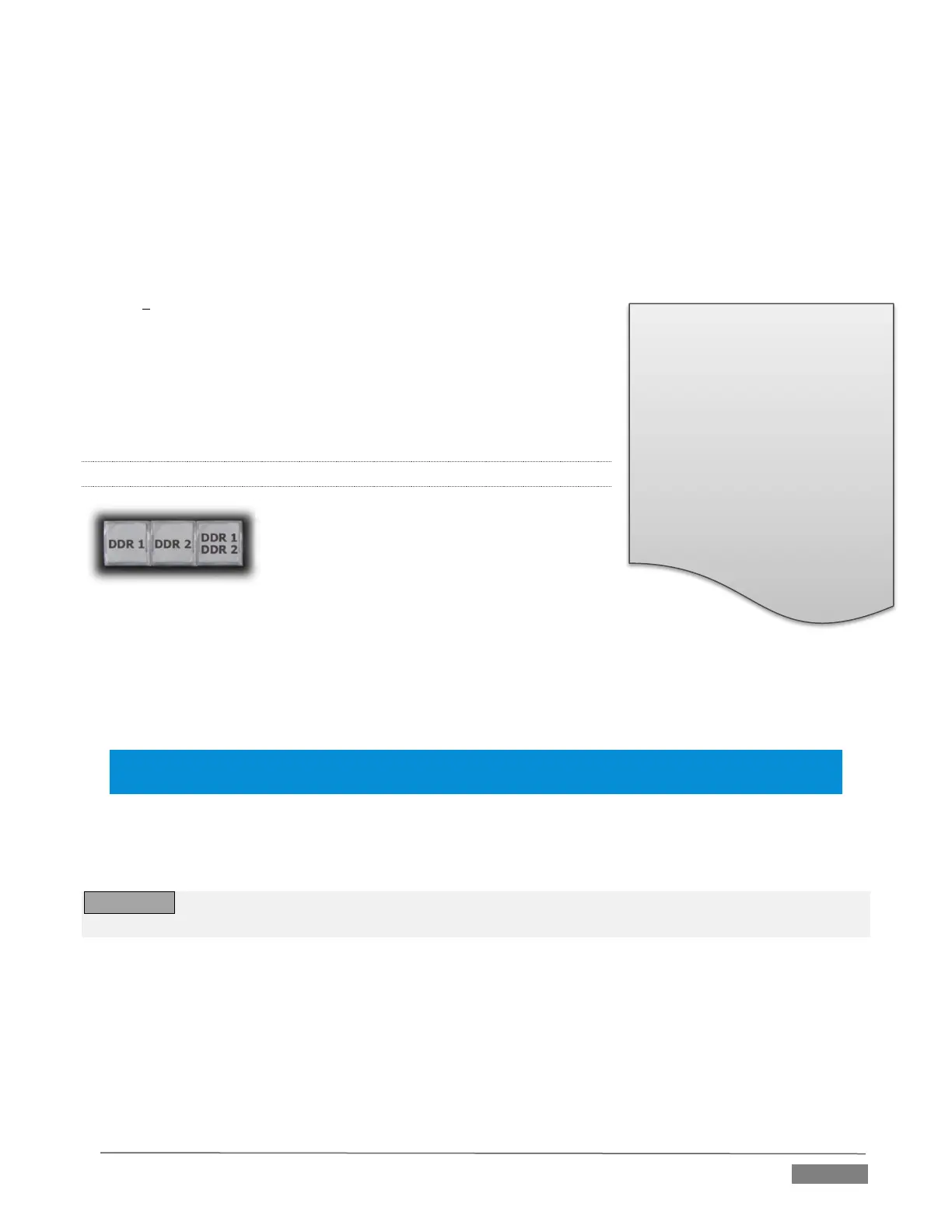Page | 245
For convenience, related controls and buttons are grouped together on the control surface. We will discuss
the features and operations supported by each group in the pages that follow. The layout includes the control
groups listed below (as shown in Figure 21-38):
DDR Delegates
Edit group (modify playlist content)
Play Speed (T-bar and presets)
Mark (replay clip creation buttons)
ALT and Qualifiers (which modify the operation of other controls)
Record toggle
DDR options
Preset (DDR Playlist)
DDR Transport (clip playback and position controls)
Let’s take a closer look at the members of each control group and their
purpose.
21.6.3 DDR DELEGATE
FIGURE 21-39
Much of the functionality of your TriCaster 850 TW relates to clip playback, navigation, and the like. These
are essentially Media Player functions, controlling one or another of TriCaster’s DDRs.
The first two buttons in this group (DDR 1 and DDR 2) basically delegate the other controls to the service of
the DDR named (TriCaster 300 is, of course unique in having just one DDR).
Note: These buttons only relate to TriCaster 850 TW operations, and do not interact with the Switcher (or
TriCaster 855 CS) delegate buttons.
The third button in this group button is not a delegate button (nor is it a radio button). The DDR 1/DDR 2
button is a toggle switch. When enabled, it tells the control surface to apply DDR Transport control group
operations to both DDRs (see Section 21.6.11).
TW-42 NOTES There is no corresponding DDR 1/DDR 2 button on TW-42. Multi-delegating DDRs is not
supported with this control surface.
The DDR 1 and DDR 2 buttons are
‘radio button’ controls. This
means that they operate just like
the ‘Favorite’ buttons provided
on a car radio to let you jump to a
preset station.
Pressing a button produces an
immediate change of state, and
your selections are mutually
exclusive.

